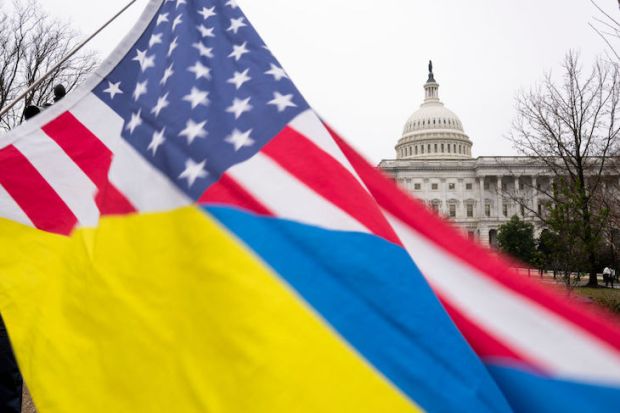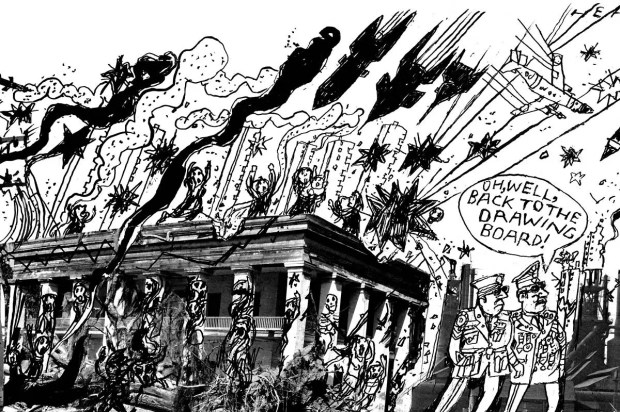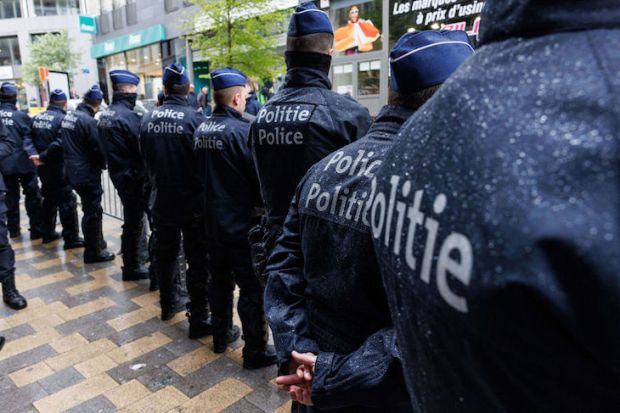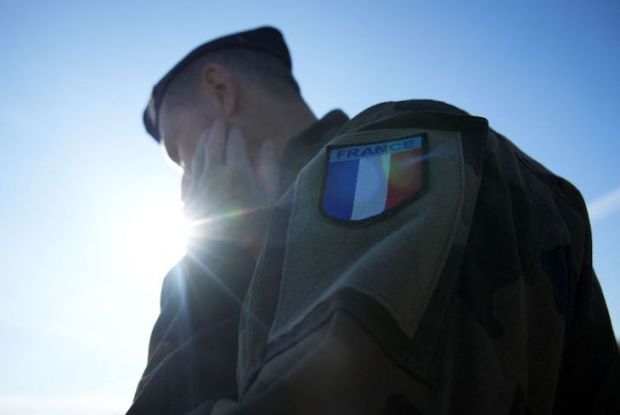In his own inimitable way, Ukrainian President Volodymyr Zelensky has unleashed his dogs of war on Vladimir Putin and once again he’s pulled off a propaganda coup. The Russian President has in the past not been averse to using animals to his advantage; he posed topless on horseback, making the pulse race of every red-blooded Russian woman, and in 2007 he famously brought his pet labrador, Konni, to a meeting with Angela Merkel, fully aware that the then German chancellor had a fear of dogs.
Zelensky is more a Jack Russell guy and earlier this month he decorated one of Ukraine’s bravest of the breed – Patron, which means ‘ammo’ in Ukrainian. According to reports, Patron and his owner, Mykhailo Iliev of the Civil Protection Service, have between them detected and defused more than 200 undetonated explosive devices in the northern city of Chernihiv since the beginning of the war.
In recognition of their invaluable work, Zelensky presented a medal to Patron in the presence of Canadian Prime Minister Justin Trudeau, whose country has provided some of the technology used by the Ukrainian bomb disposal units. Witnesses said that he was clearly excited during the service (Patron not Trudeau), and at one point ‘wagged his tail enthusiastically’.
The story has been covered by a plethora of media outlets in the West, some more mawkishly than others, but that shouldn’t trivialise the importance of what the Civil Protection Service has been doing in the last three months.
The British Army has long relied on man’s best friend to help them sniff out trouble. The Army Dog Unit of Northern Ireland was founded in May 1973 and during the Troubles two dogs and six handlers were killed on active service.
During the British Army’s deployment to Iraq and Afghanistan earlier this century, sniffer dogs were trained to detect improvised explosive devices and six lost their lives. One, a spaniel called Theo, was awarded the Dickin Medal, the animal equivalent of the Victoria Cross, after he was killed alongside his handler, lance corporal Liam Tasker, in Helmand Province in 2011. Between them, the pair were credited with detecting 14 Taliban roadside bombs and weapons caches in five months.
More than a decade later, the world has a new canine hero in Patron, and Ukraine has scored another success over Russia in a propaganda war that they are winning hands down. Patron’s Instagram page has 272,000 followers, invariably photos of him in cutesy poses, and he has inspired fans from around the world to post their own pictures praising him.
Patron reminds me of another heroic hound to capture a nation’s heart. In 1945 many British newspapers carried the story of Rob, a cross-breed collie who had undertaken ‘many unpleasant missions’ with the SAS behind enemy lines in Italy and France. Rob was also awarded the Dickin Medal – named after Maria Dickin, founder of the People’s Dispensary for Sick Animal – and in 1989 he was the centrepiece of an ‘Animals in War’ exhibition at the Imperial War Museum.
The exhibition stirred the memory of Jimmy Hughes, a world war two SAS officer, who subsequently confessed that Rob wasn’t quite the war hero of lore. In January 1945 the dog’s owners had asked for him back but the SAS had grown attached to Rob and wanted to keep him for the duration of the war. Hughes wrote to the owners explaining that Rob had ‘assisted the regiment in operations behind the enemy lines’ and his presence in their ranks was essential to the war effort. It was all fictitious. Rob’s war consisted mainly of chasing sticks in their Essex HQ but his owners lapped it up and told the press, who launched a successful campaign to have him decorated with the Dickin Medal.
Neither the SAS nor Rob let on that it was all a ruse when they went to London to receive the medal. The soldiers were given free beer, Rob got a bone, and the press got a good story. Everyone was happy.
Got something to add? Join the discussion and comment below.
Get 10 issues for just $10
Subscribe to The Spectator Australia today for the next 10 magazine issues, plus full online access, for just $10.




















Comments
Don't miss out
Join the conversation with other Spectator Australia readers. Subscribe to leave a comment.
SUBSCRIBEAlready a subscriber? Log in